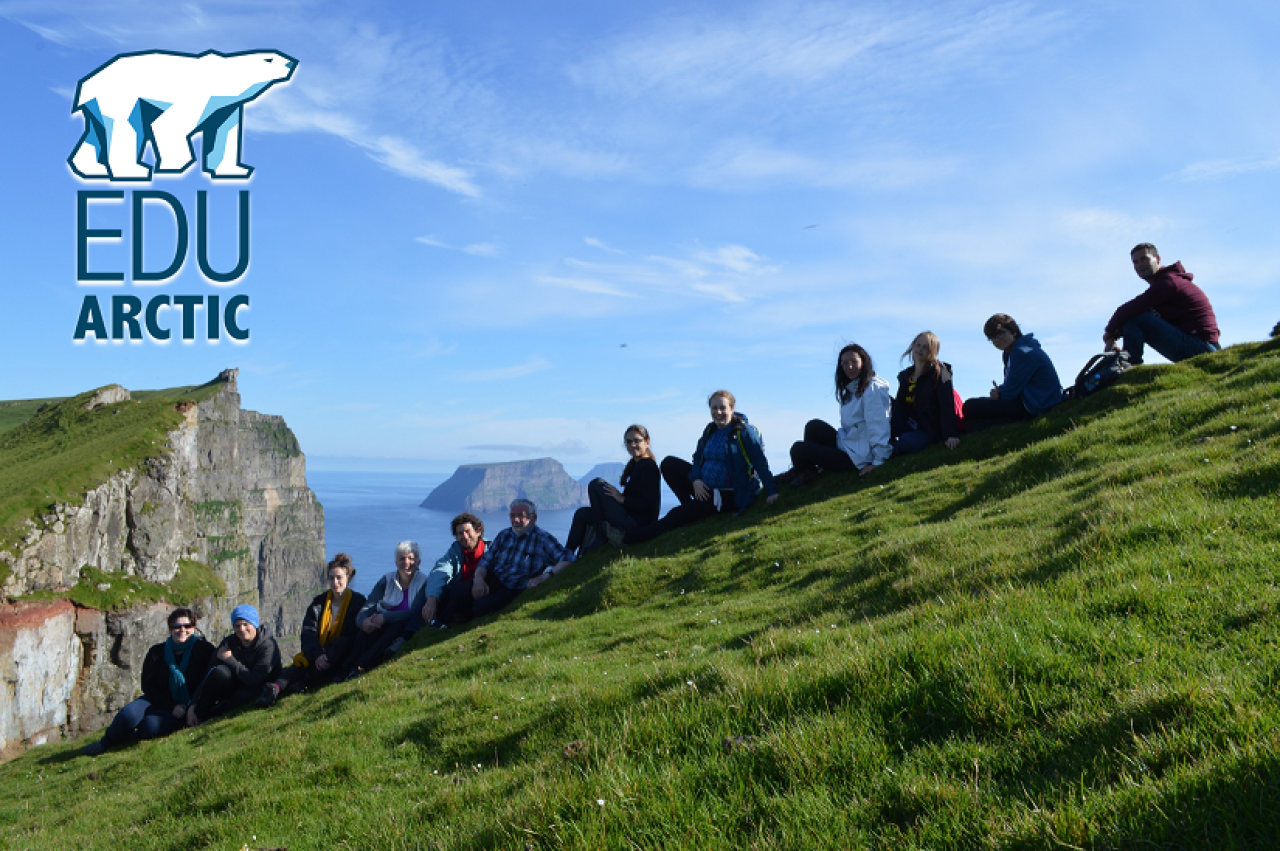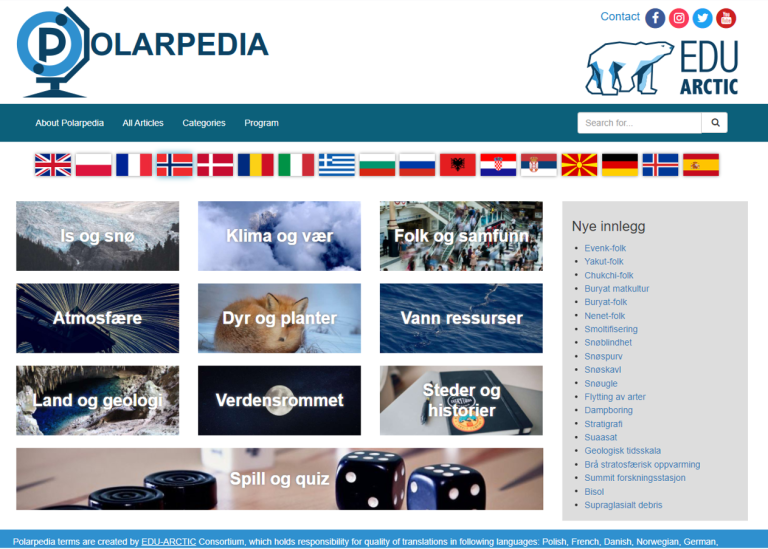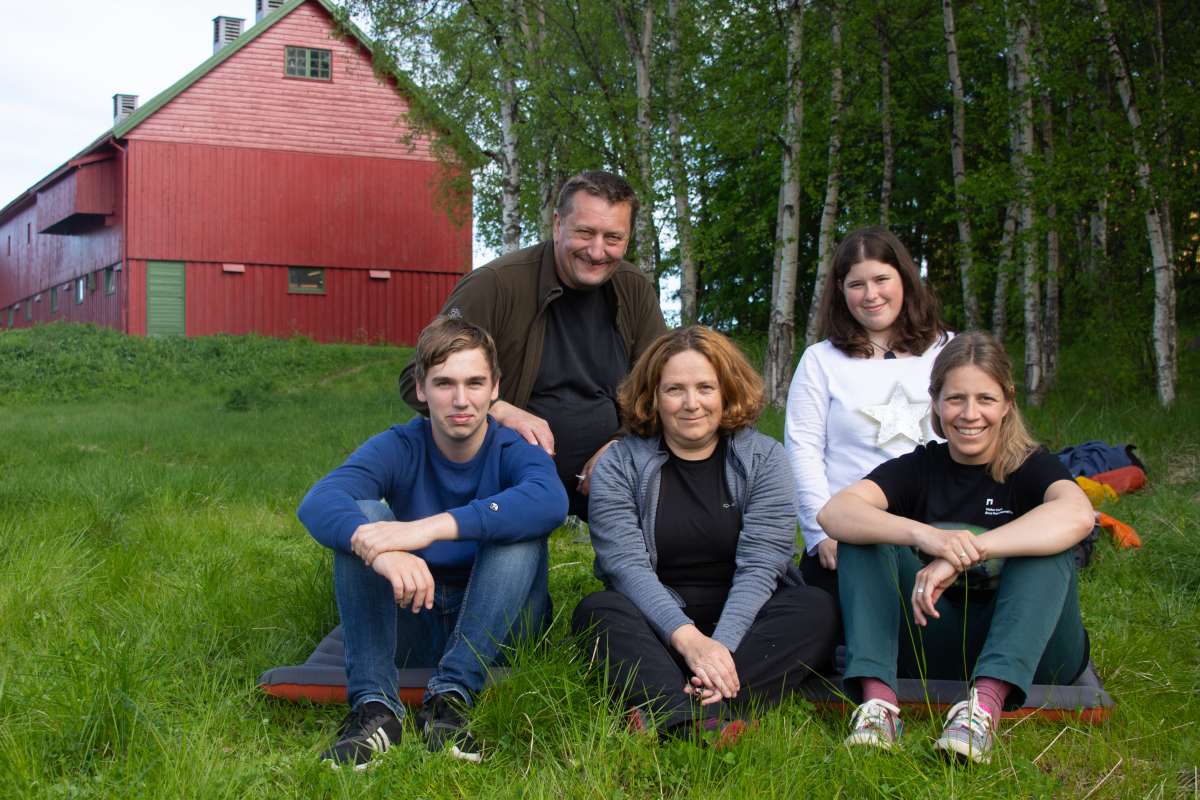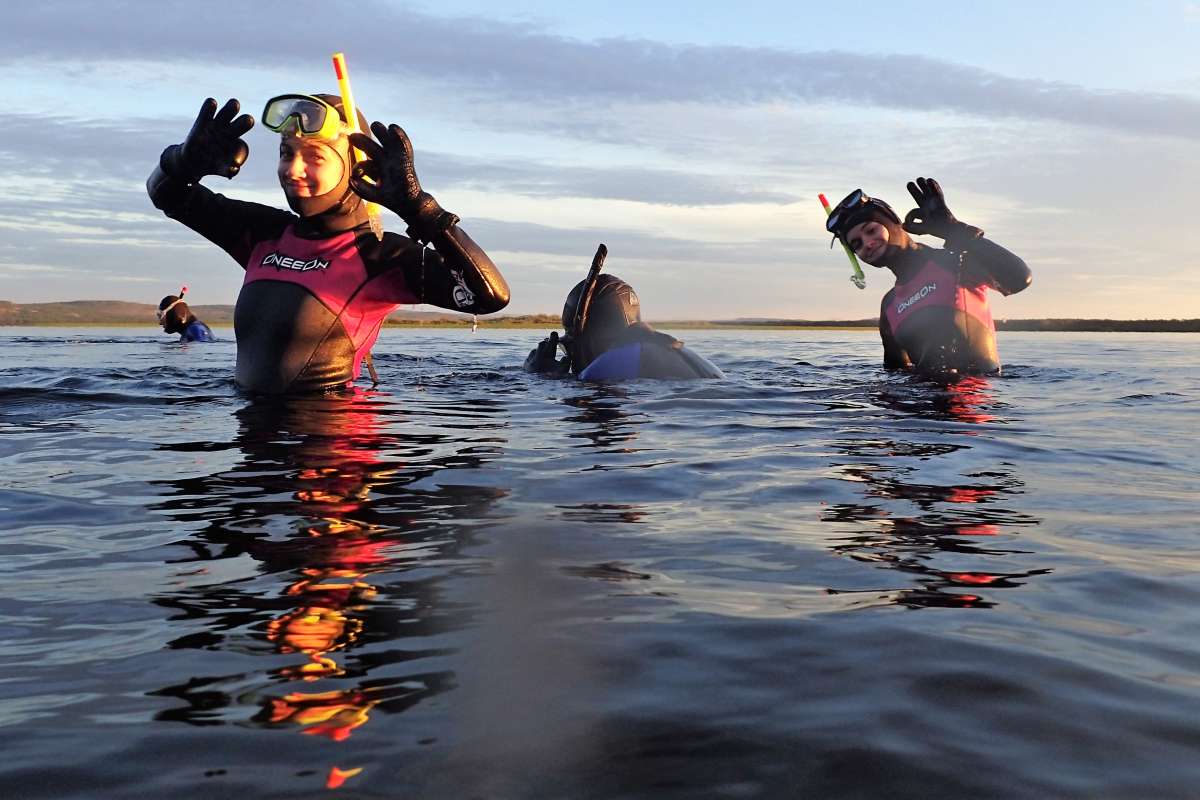Divisjon for skog og utmark
EDU-ARCTIC

Slutt: juni 2019
Start: mai 2016
Prosjektmedarbeidere
Paul Eric Aspholm Julia Schregel Alexander Kopatz Jo Jorem Aarseth Snorre Hagen Eva Narten Høberg Gabriela Wagner| Eksternt prosjektnettsted | EDU-ARCTIC1 offisiell nettside (på Engelsk) |
| Start- og sluttdato | 01.05.2016 - 30.06.2019 |
| Prosjektleder | Hilde Karine Wam |
| Divisjon | Divisjon for skog og utmark |
| Avdeling | Vilt og utmarksressurser |
| Samarbeidspartnere | Institute of Geophysics Polish Academy of Sciences (Polen), Norwegian Institute of Bioeconomy Research (Norge), The Faroe Islands Nature Investigation (Færøyene), Université de Versailles Saint-Quentin-en-Yvelines (Frankrike), American Systems (Polen), Arctic Portal (Island) |
| Totalt budsjett | 18 millioner NOK |
| Finansieringskilde | Horizon 2020, EU |
Mål
Delmål:
- Engasjere minst 500 lærere med sine klasser, fra minst 10 land
- Avholde minst 300 webinarer
- Forklare minst 300 fagbegrep på POLARPEDIA (på 4 språk)
- 4 workshops for lærere som deltar i prosjektet
- 4 naturekspedisjoner for elever i prosjektet ("forskerspirer")
Oppnådd:
- Engasjerte 1244 lærere med sine klasser, fra 62 land
- Avholdt 532 webinarer
- Forklarte 486 fagbegrep på POLARPEDIA (på inntil 17 språk)
- 4 workshops for lærere som deltok i prosjektet
- 6 naturekspedisjoner for elever i prosjektet ("forskerspirer")
Sammendrag
EDU-ARCTIC1 ble drevet av forskere og forskningsformidlere fra store deler av Europa. Prosjektet brukte nettbaserte metoder for å la elever og lærere komme i tett kontakt med naturvitenskapen. NIBIO bidro i prosjektet blant annet med å formidle fra sin egen forskning, først og fremst om ville dyr, planter og økosystemer i nord. Noen av temaene NIBIO formidlet om var: DNA fra dyr for å løse miljøkriminalitet, palsa og permafrost, brunbjørn, elvemuslinger, dyr som dykker, biologiske klokker, plastikk-forurensning i polare strøk og økologens feltutstyr.
Prosjektet tilbød flere verktøy lærerne kunne bruke i sin egen undervisning. Alt var basert på at elevene skulle forstå sammenhenger, og ikke bare lære fakta, om det som skjer i økosystemene våre:
- Direktesendte webinarer hvor aktive forskere fortalte om sin egen forskning, og både lærer og elev kunne stille forskeren spørsmål og få svar underveis.
- Oppslagsverket POLARPEDIA, hvor faguttrykk knyttet til webinarene ble forklart kort og lettforståelig med tekst og bilder på flere europeiske språk.
- Interaktiv naturovervåkning, hvor skoleklassene sendte inn naturobservasjoner fra sitt nærområde. Dataene som ble samlet inn kunne brukes fritt av alle lærerne som deltok.
- Workshops, hvor de mest aktive lærerne møtte prosjektgruppa for å utveksle erfaring om verktøyene vi brukte i prosjektet traff pedagogisk slik vi ønsket.
- The Arctic Competition, hvor elever jobbet med egne forskningsidéer gjennom skoleåret, og kjempet om en naturekspedisjon til polare strøk!
I tillegg hadde prosjektet også svært aktive kanaler på sosiale media (facebook, instagram, twitter og youtube). Der kan du blant annet se opptak av de fleste webinarene, og video/foto fra ekspedisjonene.

Publikasjoner i prosjektet
Sammendrag
EDU-ARCTIC is an open-schooling project, funded by the EU for the years 2016-2019. The main aim is to attract young people (13-20 years old) to the natural sciences. The project is using Arctic to illustrate how research are carried out and put together in order to reveal what is happening in Arctic and how Europe ins influencing Arctic and how Arctic is influencing Europe. To achieve these goals, EDU-ARCTIC uses innovative online tools like webinars provided by scientists, Polarpedia (an online encyclopaedia) of scientific terms used in the EDU ARCTIC, as well as the monitoring system that is an open-access database including app for motivation on field registration. In addition, the EDU-ARCTIC offers Arctic Competitions, where pupils submit their idea for a science project as an essay, a poster or a video. During a three-step evaluation, a few lucky winners get the possibility to join scientists on expeditions to polar research stations during the summer. For school curricula and motivation of pupils, practical hands-on activities performed by school pupils themselves by using own senses stimulate to faster learning and cognition. The learning and practicing of observation increase the understanding of complex conditions occurring in nature, related to biology, ecology, ecosystems functioning, physics, atmospheric chemistry etc. For this, the EDU-ARCTIC project developed the monitoring system. All schools in Europe are invited to participate in a meteorological and phenological observation system in the schools’ surroundings, to report these observations on the web-portal and to have access to interesting accumulated data. The schools and pupils become a part of a larger effort to gain a holistic understanding of global environmental issues. The students may learn to act as scientific eyes and ears in the field. No special equipment is needed. Reporting of observations should be made once a week in the monitoring system at the EDU–ARCTIC web-portal. A manual and a field guide on how to conduct observations and report are available through the web. Teachers may download reports containing gathered information and use them for a wide variety of subjects, including biology, chemistry, physics and mathematics. Meteorological parameters are requested reported as actual values: air temperature, cloud cover, precipitation, visibility reduction and wind force, in all 19 parameters. It is also asking for reports on meteorological and hydrological phenomena, which occurred within the previous week: like lightning, extreme and other atmospheric phenomena, ice on lakes and rivers and snow cover, in all 23 parameters. The monitoring system is also include biological field observations, including plants, like Birch, Lilac, Bilberry in all 26 parameters. Then occurrence of first individual of five species of insects like Bumble bee, Mosquito, Ant and butterfly, and then registration of first appearance of the bird species Arctic tern, Common Cuckoo, White wagtail and Crane. An app for the monitoring system has been developed in order to engage pupils more by making it more comprehensive to register the meteorology and the phenophases. Further, special webinars and polarpedia entries are developed to strengthen the monitoring system. The web-portal is open source but password access is needed in order to enter registrations. keywords: observation system, natural science, interdisciplinary, stem.
Sammendrag
Citizen science is sometimes described as "public participation in scientific research," or participatory monitoring. Such initiatives help to bring research into, for example, the classroom and engage pupils in well-structured observations of nature in their vicinity. The learning and practising of observation may increase the understanding of complex conditions occurring in nature, related to biology, ecology, ecosystems functioning, physics, atmospheric chemistry etc. For school curricula and motivation of pupils, practical hands-on activities performed by school pupils themselves by using their own senses stimulate faster learning and cognition. For this, the EDU-ARCTIC project developed the monitoring system. All schools in Europe are invited to participate in a meteorological and phenological observation system in the schools’ surroundings, to report these observations on the web-portal and to have access to all the accumulated data. The schools and pupils become part of a larger citizen effort to gain a holistic understanding of global environmental issues. The students may learn to act as scientific eyes and ears in the field. No special equipment is needed. Reporting of observations should be made once a week in the monitoring system through the EDU–ARCTIC web-portal or the accompanying mobile app. A manual and a field guide on how to conduct observations and report are available through the web. Teachers may download reports containing gathered information and use them for a wide variety of subjects, including biology, chemistry, physics and mathematics. Meteorological parameters are reported as actual values: air temperature, cloud cover, precipitation, visibility reduction and wind force, in all 19 parameters. There are also reports on meteorological and hydrological phenomena, which occurred within the previous week: like lightning, extreme and other atmospheric phenomena, ice on lakes and rivers and snow cover, in all 23 parameters. The monitoring system also includes biological field observations of phenological phases of plants: birch, black adler, lilac, rowan, bilberry, rosebay willwherb and denadelion, in all 26 parameters. The occurrence of the first individual of five species of insects: bumblebee, mosquito, ant and 2 butterflies: common brimstone and European peacook, and the registration of the first appearance of the bird species: arctic tern, common cuckoo, white wagtail and crane. An app for the monitoring system has been developed in order to engage pupils more by making it more comprehensive to register the meteorology and the phenophases. Further, special webinars and Polarpedia (the project’s own online encyclopedia) entries are developed to strengthen the monitoring system. The EDU-ARCTIC monitoring system gathered more than 2000 reports from schools, with an average monthly number of more than 80 observations. They are freely available via the web-portal, but password access is needed in order to enter registrations and data.
Sammendrag
EDU-ARCTIC is an open-schooling project, funded by the EU for the years 2016-2019 and managed by scientists, nature educators and IT technicians. The main aim is to attract young people (13-20 years old) to the natural sciences. Further, to raise awareness of how everything in nature is connected, and that STEM education therefore in part must be interdisciplinary across normal school curricula. To achieve these goals, EDU-ARCTIC uses innovative online tools with open-access, combined with nature expeditions. Four main modules complement each other, but can also be used independently: 1) Webinars, where scientists conduct online lessons about their own field of expertise. The lessons comes as packages with worksheets and online games. The lessons brings youth close to scientists. They can ask questions what it means to work with science. It is also a valuable tool for teachers to brush up their STEM knowledge and get inspiration for their own teaching. 2) Polarpedia, which is an online encyclopaedia of scientific terms used in the webinars. The science is kept easy-to-grasp, with the aim to stimulate the pupils’ curiosity to look for more information. 3) Monitoring system, which uses citizen science and the project’s own app to record observations of meteorology and phenology. Observations are open for everybody to use in their own teachings. 4) Arctic Competitions, which is the module that has engaged the pupils the most. They submit their idea for a science project in late autumn, work with the project over the winter and present it in spring as an essay, a poster or a video. Teachers come up with innovative ways to fit this work into the normal curricula. A few lucky winners get to join scientists on expeditions to polar research stations. After 2.5 years, EDU-ARCTIC has engaged at least 1093 teachers from 58 countries. There is a language barrier for some teachers, and it is difficult to fit webinars into the school timetable. However, the challenges are minor compared to the interdisciplinary success of having teachers meet across countries and curricula. Here we illustrate this in detail by presenting a way of interdisciplinary teaching (“the beauty of poetry and maths”) developed by one of the teachers in the project, Mr. Francisco José Gómez Senent. Starting from a single poem published in Nature, it innovatively combines mathematics, literature, history and linguistic competence. The teacher originally used it to stimulate curiosity about the aesthetic criterion in science. Science is not only about facts! The approach can be generalized to cover a wide range of curricula, and different teachers can use it in a team effort across classes. Conclusion: The EDU-ARCTIC project has demonstrated that letting teachers meet across countries and teaching fields facilitates inspiring and innovative cross-overs in the normal school curricula. When teachers are inspired we believe it creates a happy teacher – happy teaching effect. keywords: interdisciplinary, natural science, open schooling, research, transdisciplinary.
Sammendrag
Det er ikke registrert sammendrag
Sammendrag
Det er ikke registrert sammendrag
Sammendrag
Det er ikke registrert sammendrag
Sammendrag
Det er ikke registrert sammendrag
Sammendrag
Det er ikke registrert sammendrag
Forfattere
Hilde Karine WamSammendrag
EDU-ARCTIC er et nytt og nettbasert undervisningsopplegg for å lære ungdom 13-19 år om naturfag og forskning. Mer enn 300 nettbaserte foredrag formidles direktesendt, og både lærer og elev kan stille forskeren spørsmål og få svar underveis.


